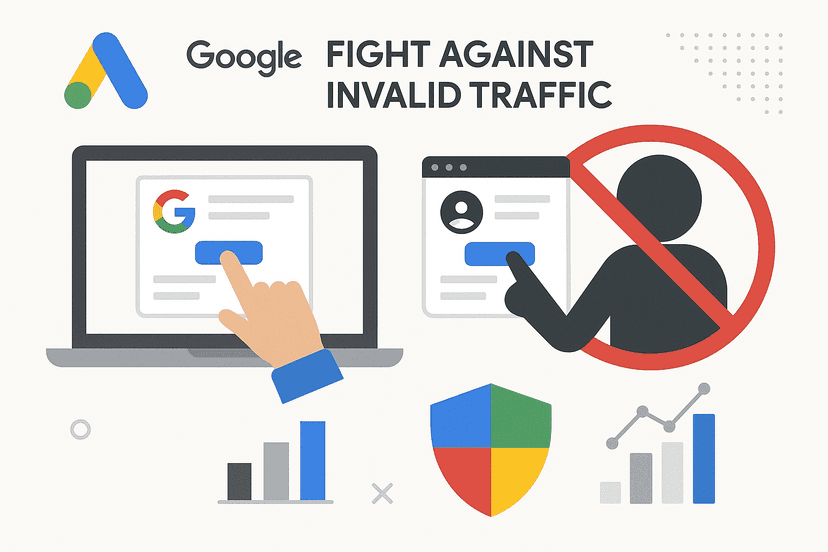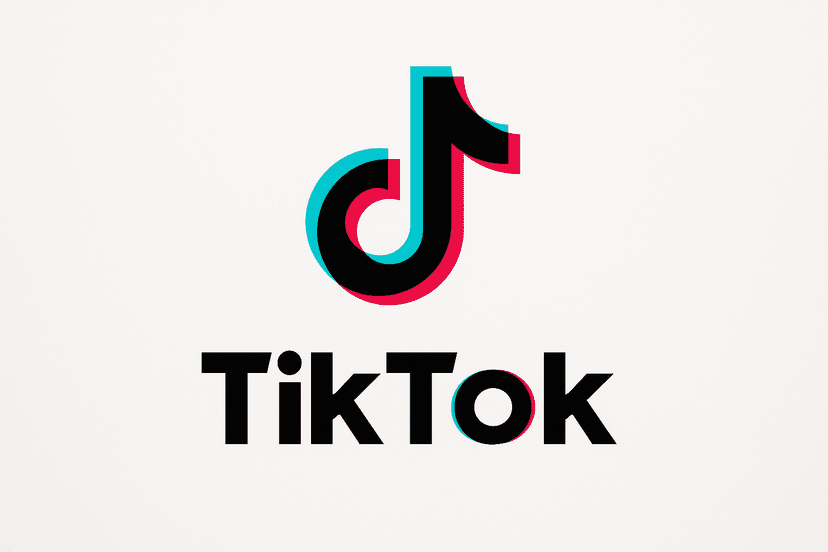Introduction: Understanding the Digital Marketing Landscape
In today’s digital-first world, establishing an online presence has become non-negotiable for businesses of all sizes. At the heart of digital marketing strategies lies Search Engine Marketing (SEM), a powerful approach that helps businesses gain visibility where their potential customers are actively searching. SEM has evolved dramatically since its inception, transforming from simple keyword bidding to a sophisticated, multi-faceted discipline that combines art and science, creativity and analytics.
Search Engine Marketing refers to the practice of marketing a business using paid advertisements that appear on search engine results pages (SERPs). Advertisers bid on keywords that users of services such as Google and Bing might enter when looking for certain products or services, which gives the advertiser the opportunity for their ads to appear alongside results for those search queries. These ads, often known as pay-per-click (PPC) ads, come in a variety of formats. Some are small, text-based ads, whereas others, such as product listing ads (PLAs) or Shopping ads, are more visual, product-based advertisements that allow consumers to see important information at a glance.
With the digital advertising landscape projected to exceed $700 billion globally by 2025, understanding SEM’s origins, current state, and future trajectory has become essential for marketers looking to stay competitive. This comprehensive exploration delves into how SEM began, how it has transformed the marketing landscape, and where it’s headed in our increasingly connected future.
The Genesis of Search Engine Marketing: From Simple Beginnings to Complex Strategies
The Birth of Search Engines and Early Advertising
The story of SEM begins with the birth of search engines themselves. While early internet search tools like Archie (1990) and Veronica (1992) laid the groundwork, it wasn’t until the mid-1990s that true search engines emerged. Yahoo! launched in 1994 as a directory of websites, manually curated and categorized. AltaVista, launched in 1995, pioneered full-text website searching and became one of the most popular search destinations.
However, it was the founding of Google in 1998 by Larry Page and Sergey Brin that would ultimately revolutionize both search and digital advertising. Their PageRank algorithm provided more relevant results than competitors by analyzing the quantity and quality of links to a webpage as a measure of its importance.
The earliest form of search engine advertising appeared in 1996 when Open Text introduced the first pay-per-placement search engine. Businesses could pay to appear at the top of specific search results, but these early systems lacked sophistication and transparency.
The Introduction of Pay-Per-Click and Google AdWords
The true breakthrough came in 1998 when GoTo.com (later renamed Overture, and eventually acquired by Yahoo!) introduced the first pay-per-click (PPC) search engine, where advertisers would bid for top placement in search results and pay only when users clicked on their listings. This innovative approach aligned the interests of the search engine, advertisers, and users—creating the foundation for modern SEM.
In October 2000, Google launched Google Ads with just 350 advertisers, introducing a simplified version of PPC advertising. The initial system allowed advertisers to create text ads that would appear on the Google search results page. Advertisers paid a monthly fee and set up their own ads through a self-service portal—a revolutionary concept at the time.
Google’s approach differed from Overture’s in one critical aspect: rather than simply ranking ads based on the highest bid, Google incorporated an ad’s click-through rate (CTR) into its ranking algorithm. This “Quality Score” concept meant that relevant ads that users actually clicked on could outrank higher-bid but less relevant ads, creating better experiences for users and more efficient spending for advertisers.
The Expansion of SEM Capabilities
By 2002, Google had revamped AdWords to include cost-per-click pricing, and the service quickly gained traction. Microsoft entered the market in 2006 with adCenter (later Bing Ads, now Microsoft Advertising), creating more competition in the space.
The mid-2000s saw rapid innovation in SEM capabilities:
-
Improved targeting options: Geographic targeting allowed advertisers to show ads only to users in specific locations, while demographic targeting enabled ads to reach particular age groups, genders, or income levels.
-
Ad extensions: These provided additional information and links within ads, expanding their footprint and functionality.
-
Conversion tracking: Advertisers could now track which clicks led to valuable customer actions like purchases, sign-ups, or calls.
-
Remarketing: Introduced in 2010, this allowed advertisers to show ads to users who had previously visited their websites, creating new opportunities for re-engagement.
By the end of the 2000s, SEM had evolved from a simple bidding system to a sophisticated marketing channel with advanced targeting capabilities, a variety of ad formats, and robust analytics. This evolution set the stage for the mobile revolution and the integration of artificial intelligence that would define the next era of search marketing.
SEM’s Evolution: From Desktop to Mobile and Beyond
The Mobile Revolution and Its Impact on SEM
The release of the iPhone in 2007 and the subsequent smartphone boom fundamentally changed how people interacted with the internet—and by extension, with search engines. By 2016, mobile searches had surpassed desktop searches on Google, marking a pivotal shift in user behavior.
This transition forced significant changes in SEM strategies:
-
Mobile-specific ad formats: Google introduced new ad formats designed specifically for mobile devices, including click-to-call buttons and location extensions that showed maps and directions.
-
Local search emphasis: With users increasingly searching on-the-go for nearby businesses, local SEM strategies became essential for brick-and-mortar establishments.
-
App promotion: New ad types emerged to help advertisers promote mobile app installations and engagement.
-
Responsive design: Advertisers needed to ensure their landing pages worked seamlessly across all devices to maintain conversion rates.
-
Voice search optimization: As voice assistants like Siri, Google Assistant, and Alexa gained popularity, advertisers began adapting their keyword strategies to accommodate more conversational queries.
In 2013, Google launched Enhanced Campaigns, which merged desktop and mobile advertising into a single campaign structure, acknowledging that the lines between devices were blurring as consumers moved between screens throughout their purchase journeys.
The Rise of Machine Learning and Automation
Perhaps the most transformative development in recent SEM history has been the integration of artificial intelligence and machine learning. Google introduced Smart Bidding in 2016, using machine learning algorithms to optimize bids for conversions or conversion value in each auction—a process known as “auction-time bidding.”
Other automation advancements quickly followed:
-
Responsive search ads (RSAs): Launched in 2018, RSAs allow advertisers to provide multiple headlines and descriptions that Google’s algorithms automatically test and optimize.
-
Automated bidding strategies: Options like Target CPA (Cost Per Acquisition) and Target ROAS (Return On Ad Spend) let advertisers focus on business outcomes while algorithms handle complex bidding decisions.
-
Smart campaigns: Designed for small businesses, these heavily automated campaigns require minimal setup and management.
-
Automated ad suggestions: Platforms began generating potential ad copy for advertisers based on website content and existing ads.
-
Performance Max campaigns: Introduced in 2021, these use automation to serve ads across all of Google’s advertising channels from a single campaign.
This increasing automation has fundamentally changed the role of SEM professionals, shifting focus from manual bid adjustments and A/B testing to strategic oversight, creative development, and business alignment.
The Integration of Shopping and E-commerce
Another major evolution in SEM has been the integration of e-commerce functionality directly into search results. Google Shopping (originally called Froogle) launched in 2002 but was completely rebuilt as a paid advertising platform in 2012.
These product-focused ads transformed the landscape for retailers:
-
Visual appeal: Shopping ads include product images, prices, and store names, capturing user attention more effectively than text ads.
-
Purchase intent: By showing specific products to users actively searching for them, shopping ads target high-intent consumers.
-
Feed-based management: Rather than managing keywords, advertisers upload product feeds containing details about their merchandise.
-
Comparison shopping: Users can compare products from multiple retailers directly in search results.
In recent years, the shopping experience has become even more seamless with features like checkout on Google, local inventory ads showing in-store availability, and automated catalog creation from website content.
This evolution has made SEM an essential channel for e-commerce businesses, driving $2.84 trillion in global e-commerce sales influenced by search in 2021 alone.
The Current State of SEM: Key Platforms and Strategies
Dominant Platforms in the SEM Ecosystem
While numerous search engines exist worldwide, the SEM landscape is dominated by a few key players:
-
Google Ads: With approximately 92% global search market share as of 2022, Google remains the undisputed leader in search advertising. Its platforms include Search ads, Shopping ads, Display ads, YouTube ads, and app promotion ads.
-
Microsoft Advertising: Formerly Bing Ads, this platform reaches users across the Microsoft Search Network, including Bing, Yahoo, AOL, and partner sites. While its market share is smaller than Google’s (around 3% globally but higher in markets like the US), it offers access to demographics that sometimes differ from Google’s user base.
-
Amazon Advertising: Though not a traditional search engine, Amazon has emerged as a major player in product search, with over 60% of consumers starting their product searches on Amazon rather than Google. Its advertising platform has grown rapidly, offering sponsored products, brands, and display options.
-
Regional search engines: In certain markets, local search engines command significant market share. Examples include Baidu in China, Yandex in Russia, and Naver in South Korea.
The dominance of these platforms has created a complex ecosystem where advertisers must understand the nuances of each platform to optimize their presence effectively.
Current Best Practices in SEM Strategy
Today’s sophisticated SEM environment requires strategies that leverage both technology and human insight:
-
Audience-centric approach: Rather than focusing solely on keywords, modern SEM emphasizes understanding and targeting specific audience segments based on demographics, interests, behaviors, and intent signals.
-
Full-funnel strategies: Effective SEM now addresses every stage of the customer journey, from awareness (broad keywords, audience targeting) to consideration (more specific product searches) to conversion (branded terms, remarketing).
-
Integration with other channels: SEM works best when coordinated with SEO, social media, email, and offline marketing for consistent messaging and attribution.
-
Data-driven decision making: Successful advertisers leverage first-party data, cross-platform signals, and sophisticated analytics to inform campaign optimizations.
-
Balanced automation and control: While embracing automation for efficiency, skilled practitioners maintain strategic oversight and intervention points to ensure alignment with business goals.
-
Structural testing: Beyond simple A/B tests, advanced SEM involves testing campaign structures, audience segments, and automation strategies.
-
Focus on incremental value: Sophisticated measurement frameworks help determine not just which ads drive conversions, but which drive conversions that wouldn’t have happened otherwise.
These approaches have transformed SEM from a tactical channel focused on keyword bidding to a strategic discipline that drives business growth through insights and continuous optimization.
Challenges in the Current SEM Landscape
Despite its sophistication, today’s SEM environment presents several challenges:
-
Rising costs: Increased competition has driven up cost-per-click in many industries, challenging ROI for advertisers.
-
Reduced control: The shift toward automation has reduced advertisers’ direct control over where and when their ads appear.
-
Keyword data limitations: “Not provided” keywords in Google Analytics and limited search term reporting in Google Ads have reduced visibility into the specific queries triggering ads.
-
Attribution complexity: Multi-device journeys and interactions across channels make it difficult to determine SEM’s true contribution to conversions.
-
Privacy changes: Restrictions on cookies and tracking have complicated targeting and measurement efforts.
-
SERP feature proliferation: Organic results are increasingly pushed down by ads, featured snippets, and other SERP features, changing the competitive landscape.
Successful SEM practitioners must navigate these challenges while staying abreast of continuous platform changes and innovations.
The Future of SEM: Emerging Trends and Predictions
As we look toward the horizon, several key trends are poised to reshape search engine marketing in fundamental ways:
AI-Driven Personalization and Predictive Marketing
Artificial intelligence will continue transforming SEM, moving beyond today’s automation toward truly predictive marketing:
-
Predictive audience targeting: AI systems will anticipate user needs before they even search, enabling advertisers to reach potential customers at precisely the right moment.
-
Dynamic creative optimization: Ads will assemble in real-time with personalized elements tailored to each user’s preferences, behavior patterns, and current context.
-
AI-generated ad content: Generative AI models will create and test ad variations at scale, optimizing language for specific audience segments.
-
Opportunity forecasting: Predictive analytics will identify emerging search trends and untapped keyword opportunities before competitors discover them.
-
Customer lifetime value prediction: Advanced models will optimize campaigns based on predicted future value rather than immediate conversion metrics.
Google’s recent introduction of AI Overview in search results—which can generate direct answers to complex questions—signals how AI might further reshape the search experience and advertising opportunities.
Voice and Visual Search Evolution
As search modalities expand beyond text, SEM will adapt to new user behaviors:
-
Voice search monetization: While currently limited, advertising models for voice search are likely to emerge as platforms seek to monetize this growing search method. This may include sponsored answers, contextual insertions, or premium placement options.
-
Visual search advertising: Platforms like Google Lens, Pinterest Lens, and Amazon’s StyleSnap are evolving toward monetization models where advertisers can bid to appear in visual search results when users search using images rather than text.
-
Multimodal search strategies: Advertisers will need unified strategies addressing text, voice, and visual search simultaneously, with appropriate content for each modality.
-
Conversational commerce: Interactive voice experiences will allow users to search, compare, and purchase products entirely through conversation, creating new advertising touchpoints.
These evolving search modalities will require new types of keywords, ad formats, and measurement approaches as they mature.
Integration of Augmented and Virtual Reality
As AR and VR technologies become more mainstream, they’ll create new dimensions for search and advertising:
-
AR product visualization: Users will be able to search for products and see how they would look in their environment through AR overlays, with sponsored placement opportunities for advertisers.
-
Virtual showrooms: VR environments will allow users to explore products in immersive 3D spaces accessed through search, with premium positioning available to advertisers.
-
Location-based AR search: Physical locations will be searchable through AR interfaces, with advertisers bidding for prominence when users scan their surroundings.
-
Virtual try-on advertising: Fashion and beauty brands will bid to have their products featured in virtual try-on experiences triggered by relevant searches.
These technologies will transform high-consideration purchases in particular, creating new advertising opportunities for categories like furniture, home décor, fashion, and automotive.
The Privacy-First Future
Perhaps the most significant force shaping SEM’s future is the growing emphasis on user privacy:
-
Cookieless targeting solutions: As third-party cookies disappear, advertisers will rely more heavily on first-party data, contextual signals, and privacy-preserving APIs like Google’s Privacy Sandbox.
-
Federated learning approaches: New technologies will enable machine learning across user devices without centralizing personal data, maintaining personalization while protecting privacy.
-
Consent-based advertising models: Users will have more explicit control over how their data is used for advertising, potentially creating premium “consented audience” segments.
-
Measurement evolution: Attribution models will adapt to limited user-level tracking by leveraging aggregated data, modeling, and incrementality testing.
-
Privacy as a competitive advantage: Search platforms that can deliver advertising effectiveness while protecting user privacy will gain market share.
This privacy-centric future will require advertisers to develop new skills in modeling, aggregated data analysis, and first-party data activation.
The Metaverse and New Digital Realms
As digital and physical worlds continue to blend, search behavior and advertising will extend into new realms:
-
Metaverse search engines: New search tools will help users discover experiences, locations, and items within virtual worlds, creating fresh advertising inventory.
-
Cross-world advertising: Campaigns will span physical and virtual environments, with consistent messaging and seamless transitions between realms.
-
Virtual economy advertising: As digital goods gain value in virtual worlds, new advertising models will emerge to promote these assets.
-
Experiential search advertising: Rather than promoting products, advertisers will bid to promote immersive experiences and events across physical and digital environments.
While still emerging, these new digital realms represent the next frontier for search as users spend more time in immersive digital environments.
Sustainability and Ethical Advertising
The future of SEM will also be shaped by growing emphasis on sustainability and ethics:
-
Carbon-aware advertising: Platforms and advertisers will optimize campaigns to reduce carbon footprint, potentially offering incentives for environmentally efficient advertising approaches.
-
Ethical targeting guardrails: More sophisticated controls will prevent advertising from exploiting vulnerable populations or reinforcing harmful societal patterns.
-
Transparent supply chains: Verification systems will allow advertisers to ensure their digital supply chain meets ethical standards regarding data usage, content adjacency, and business practices.
-
Purpose-driven preference: Platforms may begin offering advantages to advertisers who demonstrate commitment to sustainability and ethical practices.
These considerations reflect broader societal shifts that will increasingly influence how search marketing operates.
Conclusion: Preparing for SEM’s Next Chapter
From its humble beginnings as simple keyword bidding to today’s sophisticated, AI-driven ecosystem, Search Engine Marketing has consistently evolved to match changing user behaviors, technological capabilities, and business needs. Looking ahead, we can expect this evolution to accelerate as emerging technologies reshape how people search and discover information.
For marketers and businesses, success in this changing landscape will require:
-
Adaptability: The willingness to embrace new search modalities, advertising formats, and measurement approaches.
-
Technical fluency: Understanding of AI, machine learning, and automated systems to maintain strategic advantage.
-
Privacy expertise: Skills in navigating growing privacy regulations while maintaining marketing effectiveness.
-
Creative excellence: The ability to craft compelling messages that stand out in increasingly crowded and diverse search environments.
-
Strategic alignment: Ensuring that tactical SEM execution supports broader business goals and integrates seamlessly with other marketing channels.
-
Ethical leadership: Commitment to responsible practices that build sustainable relationships with customers.
As search becomes more immersive, personalized, and integrated into everyday life, SEM will remain a critical channel for connecting businesses with potential customers at moments of high intent. Those who anticipate and adapt to these changes will find tremendous opportunities to grow their businesses through the next generation of search marketing.
The future of SEM promises to be as transformative as its past, creating new possibilities for businesses to connect with consumers in meaningful, relevant ways across an expanding universe of digital touchpoints.






